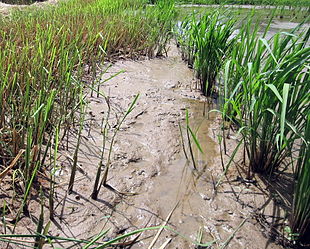Our website is made possible by displaying online advertisements to our visitors.
Please consider supporting us by disabling your ad blocker.
Perennial rice

Perennial rice are varieties of long-lived rice that are capable of regrowing season after season without reseeding; they are being developed by plant geneticists at several institutions. Although these varieties are genetically distinct and will be adapted for different climates and cropping systems, their lifespan is so different from other kinds of rice that they are collectively called perennial rice. Perennial rice—like many other perennial plants—can spread by horizontal stems below or just above the surface of the soil but they also reproduce sexually by producing flowers, pollen and seeds. As with any other grain crop, it is the seeds that are harvested and eaten by humans.
Perennial rice is one of several perennial grains that have been proposed, researched or are being developed,[1] including perennial wheat, sunflower, and sorghum. Agronomists have argued that increasing the amount of agricultural landscapes covered at any given time with perennial crops is an excellent way to stabilize and improve the soil, and provide wildlife habitat.[2]
Perennial rice breeding was initiated at the International Rice Research Institute, Philippines[3] and are currently being developed at the Yunnan Academy of Agricultural Sciences, People's Republic of China, and other institutions, but are not yet available for distribution.
- ^ Wagoner, P. (1990)Perennial grain development: past efforts and potential for the future. Critical reviews in plant sciences. 9(5):381-408
- ^ Reviewed in Cox, T.S., et al. (2002) Breeding Perennial Grain Crops. Critical Reviews in Plant Science. 21(2):59-91..
- ^ International Rice Research Institute, 1988. pp. 66 in IRRI toward 2000 and beyond. IRRI, Manila, Philippines.
Previous Page Next Page


